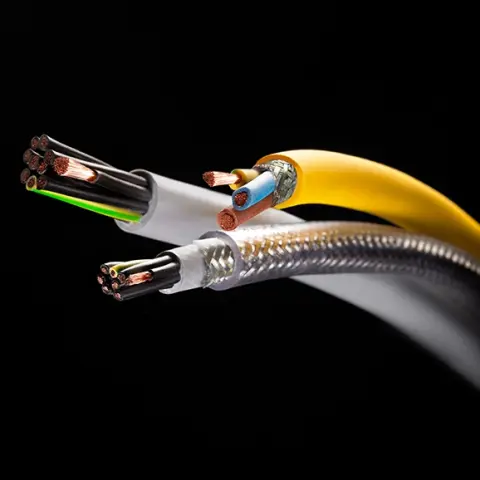Standardised Fire Alarm and Communication Cables for Buildings and Infrastructure
What are the differences between fire alarm and communication cables?
A fire alarm cable transmits signals from fire alarms to a control centre. Communications cables, on the other hand, transmit general data in communications systems. Fire alarm cables are flame retardant, typically halogen free, and low smoke so that they do not produce toxic gases or thick smoke in the case of a fire. Cables with functional integrity are suited for security systems such as central fire alarm systems and sprinkler controls, for instance.
Advantages of Communication and Fire Alarm Cables at a Glance
- Maximum safety: Reliable signal transmission even at extreme temperatures saves lives and protects property
- Guaranteed conformity to standards: CPR-certified cables fulfil all legal requirements and simplify their approval
- Investment in durability: Robust construction and high-quality materials reduce maintenance costs and downtimes
- Versitile applications: An assortment of indoor, outdoor, and underground cables covers all projects
- Competent advice included: Our experts are here to support you in planning and choosing the optimum solution

Why Are These Cables Indispensable?
In emergencies, seconds can mean the difference between life and death. CPR-compliant alarm cables make up the nervous system of modern security technology (CPR: Construction Products Regulation, europäische Bauproduktenverordnung/BauPVO). Without them, there would be no stable communication in networks, buildings, and security systems. Cables that transmit signals connect alarms, control centres, and warning systems together. In critical situations, they secure the operation of elevators, doors, or emergency systems to protect people and property.
Halogen-Free Means Double Protection Against Flames and Toxic Gases
Cables are not permitted to propagate flames or release dangerous gases when exposed to fire. Halogen-containing materials, such as PVC or PTFE, do prevent the propagation of flames, but in doing so, release highly corrosive and toxic vapours. It is for this reason that we use aluminium hydroxide in our halogen-free fire alarm wires and telecommunication cables. When ignited, they undergo endothermic decomposition, releasing water vapour, which cools the surface and displaces oxygen. This does not produce any acids—only a small amount of smoke and it is significantly less toxic. Special types, such as the FE(EI)180/E30, can remain functional for up to three hours, ensuring the functionality of vital systems. Learn more in our Newsroom article .
Discover our telecommunication & fire alarm cables
What Makes Our Fire-Proof Cables So Special? Their Characteristics:
- Halogen free: No toxic gases released when ignited
- Functional integrity: Signal transmission ensured even in case of fire
- Underground installation: Robust construction for underground use
- Outdoor cable: Weather resistant for use in the open
- Indoor cable: Optimised for installation in buildings
A Wide Range of Applications
Communication and fire-resistant cables from HELUKABEL ensure the undisrupted operation of modern infrastructure. They connect security systems in buildings, relay announcements, transmit video surveillance signals, operate access controls, and form the backbone of industrial communication.
At SMS Siemag AG, the expansive factory premises are secured by three stationary fire monitors. Thanks to HELUKABEL, the power cables remain functional even when directly subjected to flames. Read now
FAQ
Cable fires are started due to overload, short-circuits, defective connections, or external heat sources. Overheated insulation ignites and spreads the fire along the length of the cable. This is why fire-resistant materials and correct dimensioning are crucial for safety.
Insulation integrity (FE/EI) only tests the cable and means that the cable's electrical insulation remains intact in case of fire. Functional integrity (E) tests the complete system including mountings and installation. The E classification is more practical and meaningful for real applications.
FE(EI)180 is a measure of the integrity of the insulation when exposed to direct flames for more than 180 minutes without any short-circuiting between cores or earthing. E30 goes beyond that. This means that not only does the insulation remain intact, but that the entire system (cable plus connected equipment) remain functional in case of fire for at least 30 minutes.
No, but we recommend halogen-free designs. In fires, they do not release any toxic gases and protect people and sensitive electronics. HELUKABEL predominantly offers halogen-free solutions.
Yes, HELUKABEL, as a manufacturer of telecom cables, also manufactures halogen-free communication cables. These are especially well suited for sensitive spaces such as hospitals, schools, or data centres where people and property are the highest priority.
No, the red colour is not a standard requirement. It serves to ease visual identification and differentiation between other cables. The cable's technical characteristics are more important than its colour.
More Products for Industrial & Machinery Sector:
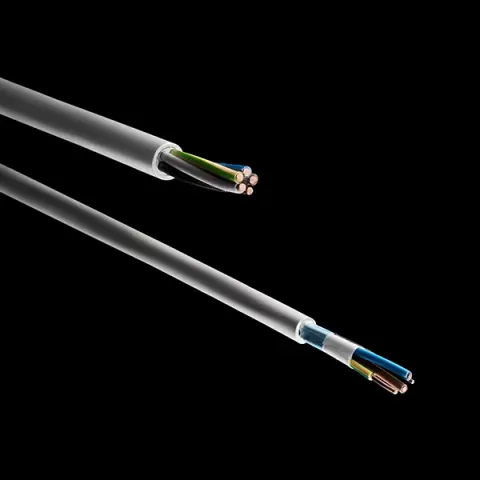
Installation Cables
DISCOVER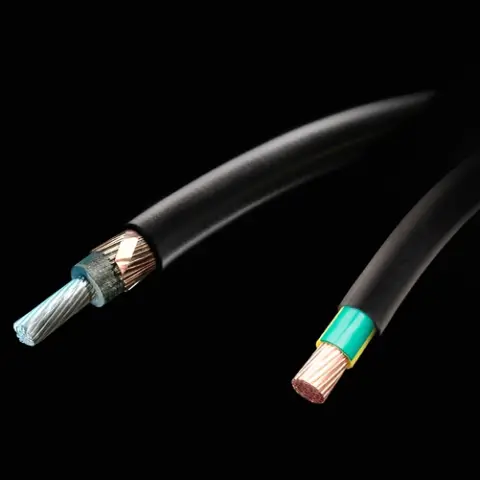
Energy and Power Cables
DISCOVER
Single Cores and Single Core Cables
DISCOVER
Bus Cables
DISCOVER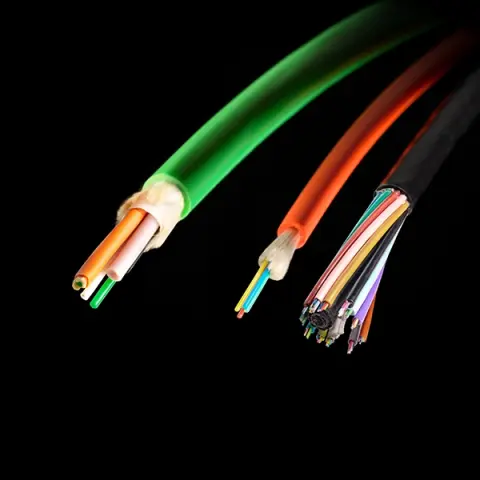
Fibre Optic Cables
DISCOVER
Industrial Ethernet Cables
DISCOVER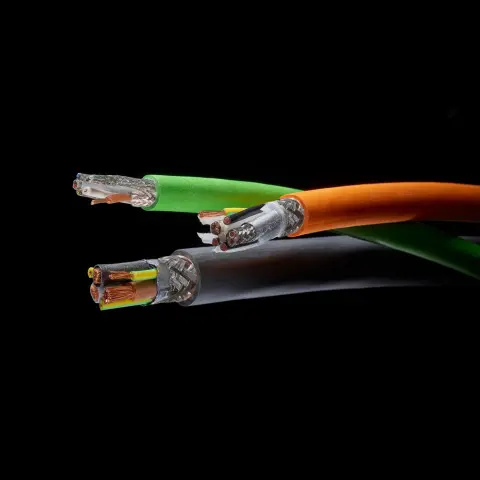
Motor, Servo & Feedback Cables
DISCOVER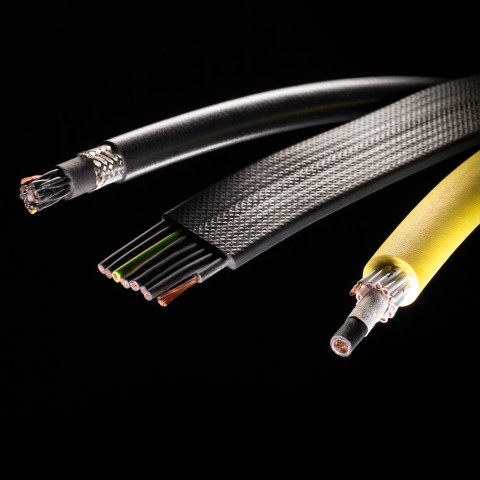
Cables for Continuous Motion Applications
DISCOVER